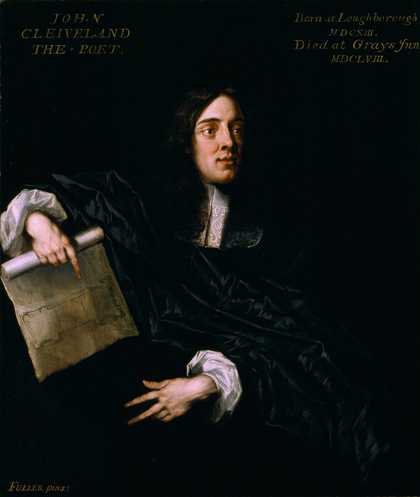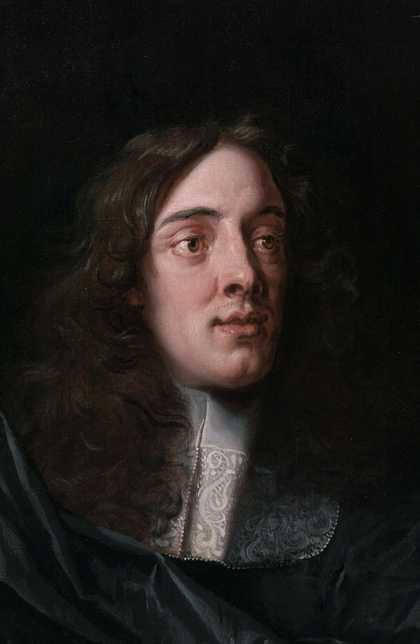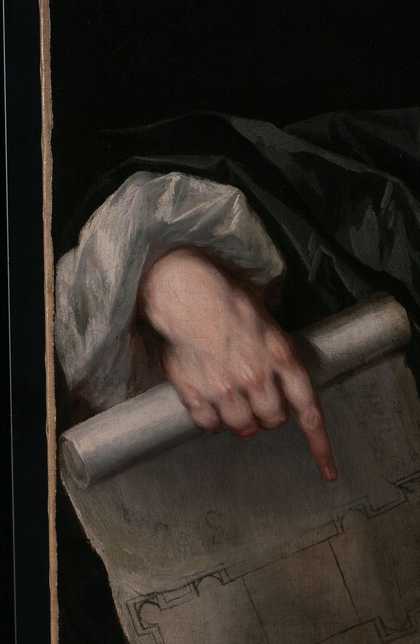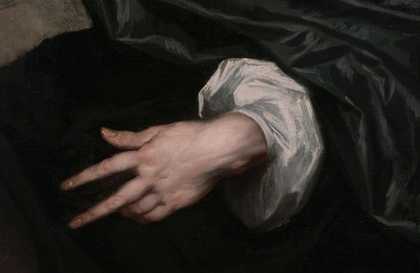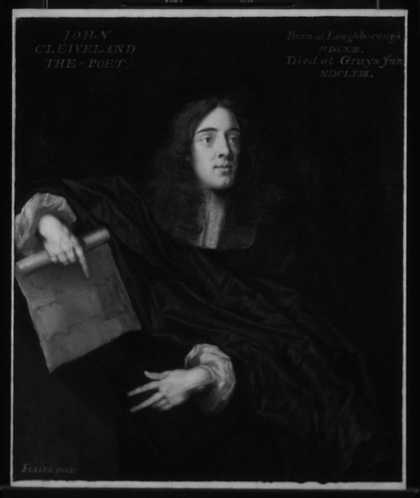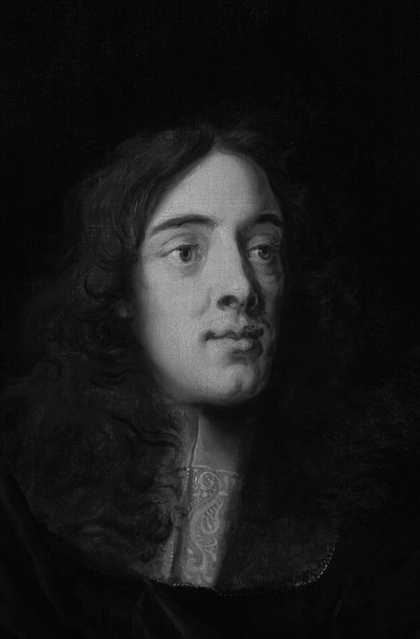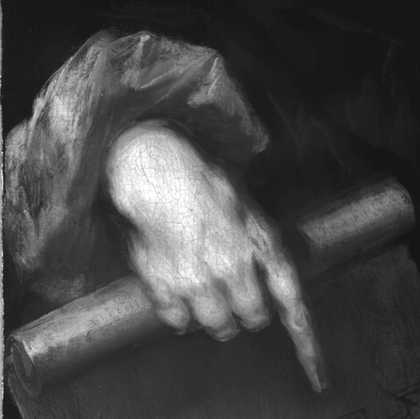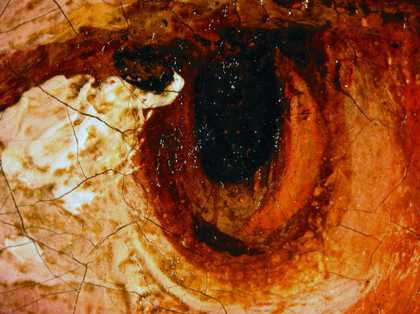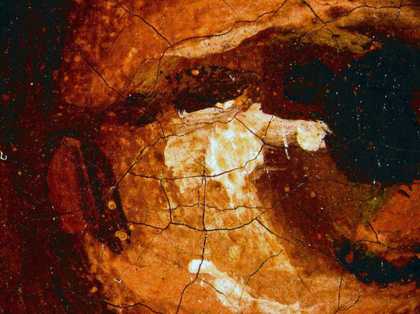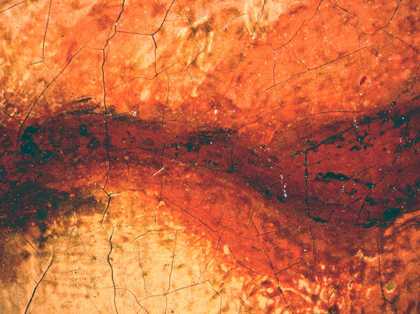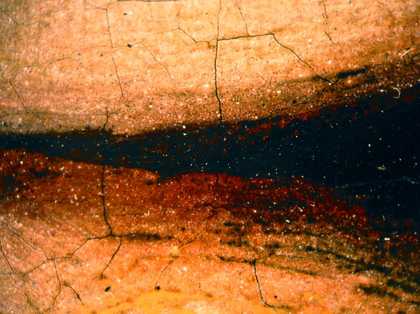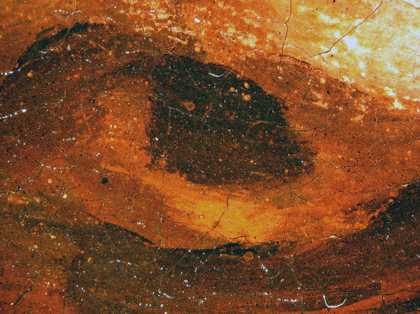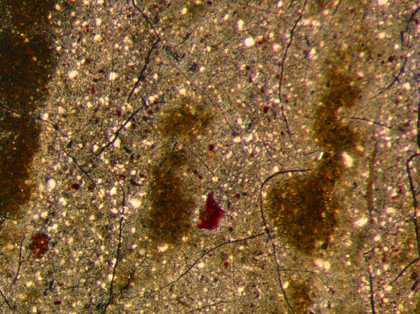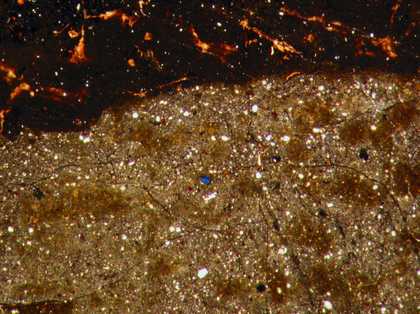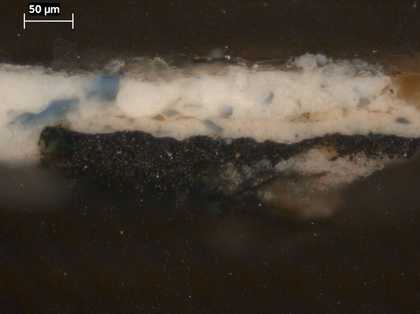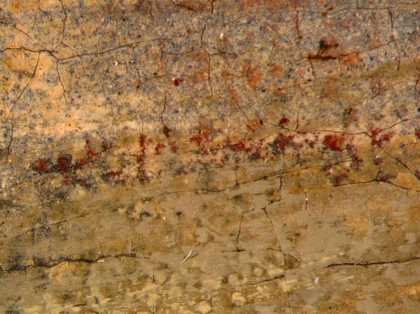This painting is in oil paint on a single piece of linen canvas measuring 1206 x 1009 mm (figs.1–4). The plain woven linen has a thread count of 16 vertical by 16 horizontal picks per square centimetre. There is cusping of the canvas weave on all sides of the painting but it is much less pronounced along the right edge (fig.5).1
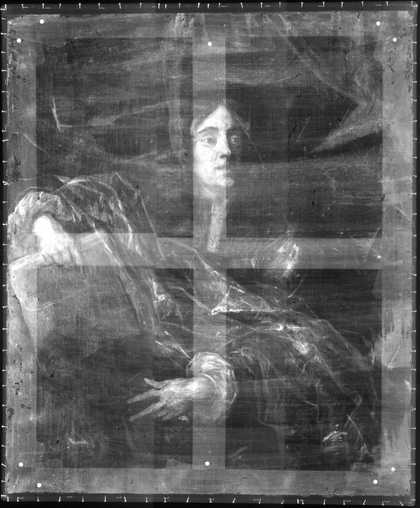
Fig.5
X-radiograph of Portrait of an Unknown Man c.1660
The ground is off-white in colour (fig.6). It is composed mostly of chalk with some lead white and small additions of earths and black, all bound together in oil.2 The ground is covered over with opaque, salmon pink priming. This layer is rich in lead white, which was tinted with a mixture of vermilion, burnt sienna, yellow ochre, cologne earth and red lead. Viewed at high magnification the painting’s surface is covered with eruptions of lead soap aggregates, which appear to originate in the priming.3 Although it is known that lead soap aggregates can form red lead, analysis of the samples indicates that red lead is also present in the priming as an admixture by the artist.
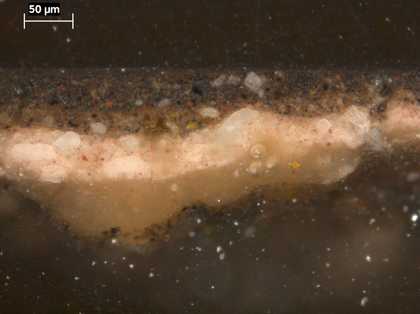
Fig.6
Cross-section through the grey foreground, photographed at x320 magnification. From the bottom: off-white ground; salmon pink priming; greenish grey paint; mid-grey paint worked wet-in-wet with the layer beneath it
No definitive drawing stage can be identified with surface microscopy or infrared reflectography (figs.7–9). Close examination of the painting indicates that the artist established position and general character of his sitter with opaque red, dark reddish brown paint and black paint.
Thereafter he appears to have built up the flesh tones with bold, energetic brushwork in shades of pink, red, white and black, all applied wet-in-wet (figs.10–14). The red outlines of the hands were strengthened here and there with more red paint.
The costume appears to have been laid in generally with black, with the grey highlights of folds applied on top (figs.15–16).
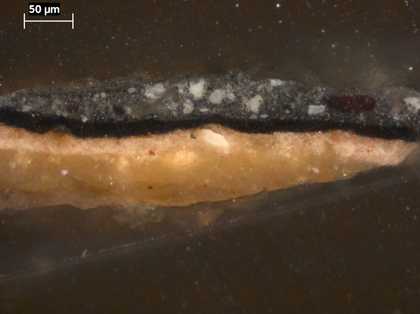
Fig.15
Cross-section through a grey, highlit fold in the black sash, photographed at x320 magnification. From the bottom: off-white ground; salmon pink priming; back paint of sash; opaque grey paint of highlight. A lead soap aggregate is visible on the far left of the priming
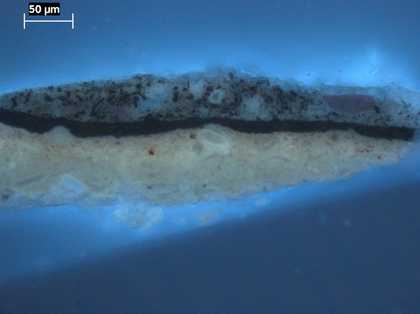
Fig.16
Cross-section through a grey, highlit fold in the black sash, photographed at x320 magnification in ultraviolet light. From the bottom: off-white ground; salmon pink priming; back paint of sash; opaque grey paint of highlight. A lead soap aggregate is visible on the far left of the priming
The painting is notable for its use of a brightly coloured palette to describe the blacks, whites and flesh tones. For example, the grey paint of the sitter’s black sash appears to contain both a strongly coloured smalt and red lake pigments alongside the lead white and black (figs.17–18). Likewise, a variety of differently coloured smalt was found in the white paint of the cuffs (figs.19–20). Smalt, vermilion and red lake were identified in the flesh paints from surface examination (fig.21).
The artist was careful in his choice of pigments to describe different areas of black. The black background contains a mixture of black with a little lead white and some earths. Analysis with EDX (energy-dispersive X-ray analysis) of the black of the shadows in the silky drapery suggests that verdigris was incorporated as a siccative for the oil. The artist used two, subtly different black pigments in the drapery: lamp and bone black. An opaque, pinkish orange paint layer (finer and more strongly coloured than the priming, also containing some smalt) can be seen with magnification under the grey and white paint of the cuff; it lends warmth to the cool whites and suggests the transparency of the fabric (fig.19).
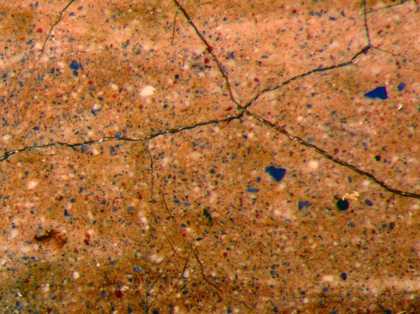
Fig.21
Detail of the index finger of the sitter’s right hand, photographed at x12 magnification, showing blue smalt, vermilion and red lake in the flesh tone
The artist made a number of small alterations to his painting as it developed. The X-radiograph shows changes to the black drapery to make a more pleasing arrangement of the folds. A reserve was left in the black drapery for the scroll but it has been extended over the black costume at the right for about 70 mm. Several minor alterations were made in the hands. Surface examination reveals that the third finger on the sitter’s left hand was changed from a bent finger to a straight one, as a red underpaint is clearly visible through the black. The artist also broadened the thumb on the left hand by adding some of the initial shadow paint over the background. Infrared reflectography reveals a minor adjustment to the index finger of the sitter’s right hand which has been made slightly thinner. The background appears to have been black originally but it is very abraded and has been extensively overpainted by a later hand in a greenish/brownish grey. There is much grey overpaint on the scroll, rendering it difficult to read.

